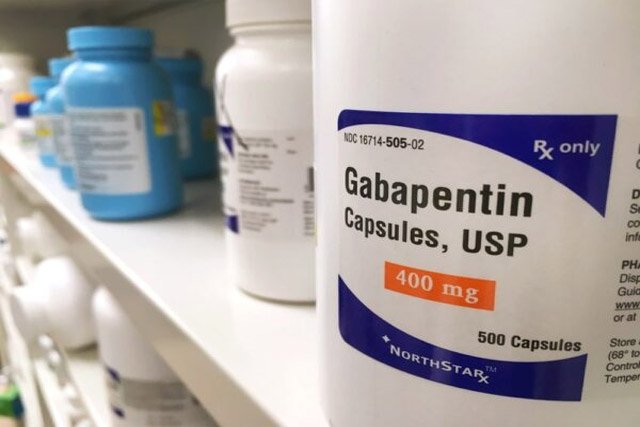If you want to know how long Gabapentin stays in your system, then you’ll want to read this article. Within the next five minutes, you will uncover all the necessary information about Gabapentin, including its effects on various types of drug tests currently administered, certain factors influencing Gabapentin’s detection in drug testing, and whether it appears on a drug test.
Gabapentin, also known as Neurontin, can affect individuals differently based on certain factors such as weight, genetics, age, and the prescribed dosage. Gabapentin has a half-life of 5-7 hours, and it takes five half-lives to fully leave the body. Based on scientific studies, Gabapentin generally stays in the human system for about 35 hours, while for individuals living with kidney disease can take up to 52 hours.
A licensed doctor must write a prescription for gabapentin, categorizing it as an antiepileptic or anticonvulsant drug. Its effects have many medicinal benefits for those suffering from nerve pain and seizures, but it also comes with illicitness for those who like its calming effects. Many people are currently researching the duration of Gabapentin and the drug tests used to detect it, which could help to explain why.
How Long Does Gabapentin Stay in Your Body?
Gabapentin can stay in your body for approximately two days after stopping, which is also the average time it’s detectable by standard lab tests. While urine tests for Gabapentin remain the most popular, saliva, blood, and hair tests are becoming more common.
Most companies and entities administrating drug tests often use a urinalysis or saliva test due to their affordability, as blood and hair tests tend to be rather expensive. However, if parties argue about a false-positive saliva or urine test, most companies are willing to pay for the more expensive blood and hair tests.
For those who are wondering how long Gabapentin stays in your system, it’s important to understand the following four drug tests:
1. Hair
A hair test, also known as a hair follicle drug test, has the ability to detect Gabapentin for up to 90 days. It works by collecting the drug’s chemicals from your bloodstream and using them as new hair cells to grow hair. While this test has the longest window of time, it falls short in some cases where determining recent use may not be the most accurate test for Gabapentin.

Hair follicle testing can cost companies between $100 – $125 per sample for professional laboratory testing. Although this may not be the most economical approach, many businesses deploy this test due to its extended time frame to detect drugs.
Most standardized hair follicle tests do not detect Gabapentin, a non-controlled substance unless they specifically test for it. These tests are primarily designed to detect drugs like stimulants, opiates, benzodiazepines, barbiturates, and THC.
2. Urine
Urinalysis testing typically uses a 5 or 10-panel test to detect a number of drugs such as cocaine, LSD, THC, heroin, and many more, including Gabapentin. The technical name for a urinalysis is called an immunoassay test. This is a biological test that works by measuring the presence of molecules in a solution via an antigen or antibody.
Most people recognize this test because it is the most common and widely used test in today’s modern society. The average cost for lab urine testing is about $50 -$75, while instant drug cups run around $5 each, making them very cost-effective. The testing administrator can detect the presence of Gabapentin in urine for up to three days if they request the lab to test for it. However, many samples utilize technology that provides instant results for the testing administrator, even though some are sent to laboratories for analysis. These types of urine tests are very popular among probation officers and drug court programs.
3. Blood
Blood testing is the most invasive type of drug test. When urine or other types of matrices are not ideal, people often deploy it. They can use it when suspecting someone of being under the influence of alcohol or drugs since the ideal screening time for a blood test is within 24 hours of use. With the average blood drug test costing over $150, most administrators opt for the less expensive urine or saliva test.
Blood drug tests can detect the use of alcohol and drugs typically within minutes of consumption and are often used by law enforcement for those who refuse a breathalyzer test. Because drugs like Gabapentin rapidly metabolize in your body, this type of test is only accurate during the first 24 hours of use.
However, depending on the amount of Gabapentin in your system, this window can last a little while longer. Blood drug tests are generality conducted by special request and are not commonly used in the workplace.
4. Saliva
Saliva drug testing involves the use of a medical swab to collect saliva inside of your mouth. Also known as Salivaomics, a diagnostic drug testing technique that utilizes laboratory analysis to detect the presence of drugs in your saliva. This type of drug test has become very popular due to its affordability and less invasive nature.
Much like a urine test, sending a saliva sample to a laboratory can incur a cost between $50 to $75, while companies with a large workforce conducting random drug tests can purchase instant saliva tests for less than $5 each, making them a cost-effective solution.
Today, administrators more frequently use Liva drug tests than the traditional urine test because they are easier to administer, collect in full view of both the individual and administrator, and are nearly impossible to tamper with. Many police officers carry saliva drug testing kits that they can use to determine if someone is under the influence of drugs such as cannabis, heroin, cocaine, and other illicit substances.
With 99 percent accuracy, a saliva drug test can detect the presence of drugs like Gabapentin for up to three days after use, but only if it is testing for Gabapentin.
What Factors Determine How Long Gabapentin Will Stay in Your System?
There are several factors that can determine how long Gabapentin stays in your system. Since each individual’s body weight and chemistry varies from person to person, the amount of time Gabapentin stays in your system can also vary. For those who abuse Gabapentin or have kidney disease, the standard 2-3 days of time can be increased to 4-5 days.
Other factors that could impact metabolism, including but not limited to, typically keep Gabapentin in most people’s system for about 35 hours.
Frequency of use: It is advisable to stop consuming Gabapentin 4-5 days before a drug test that specifically screens for it because the frequency of use results in Gabapentin staying in your system longer.
Dosage amount: The amount of Gabapentin that you take can affect the time it stays in your system. Gabapentin, when taken in large dosages, has a tendency to accumulate in your body, therefore prolonging the time it takes to leave your system.
Age: Elderly individuals’ bodies naturally decline with age, making age a significant factor in metabolizing them. Aging people are also more prone to kidney failure, which can increase the time it takes the body to rid itself of toxins and drugs such as Gabapentin.

Health: A person’s health can impact the half-life cycle of Gabapentin. Those living with healthy kidney functions can typically rid their bodies of Gabapentin in less than three days; however, someone living with kidney disease or failure may need 28 days before it fully leaves their system.
Will Gabapentin Show up on a Drug Test?
Most employers do not include Gabapentin in their standard 5 or 10-panel drug tests because it is not a controlled substance unless they are specifically screening for it.




